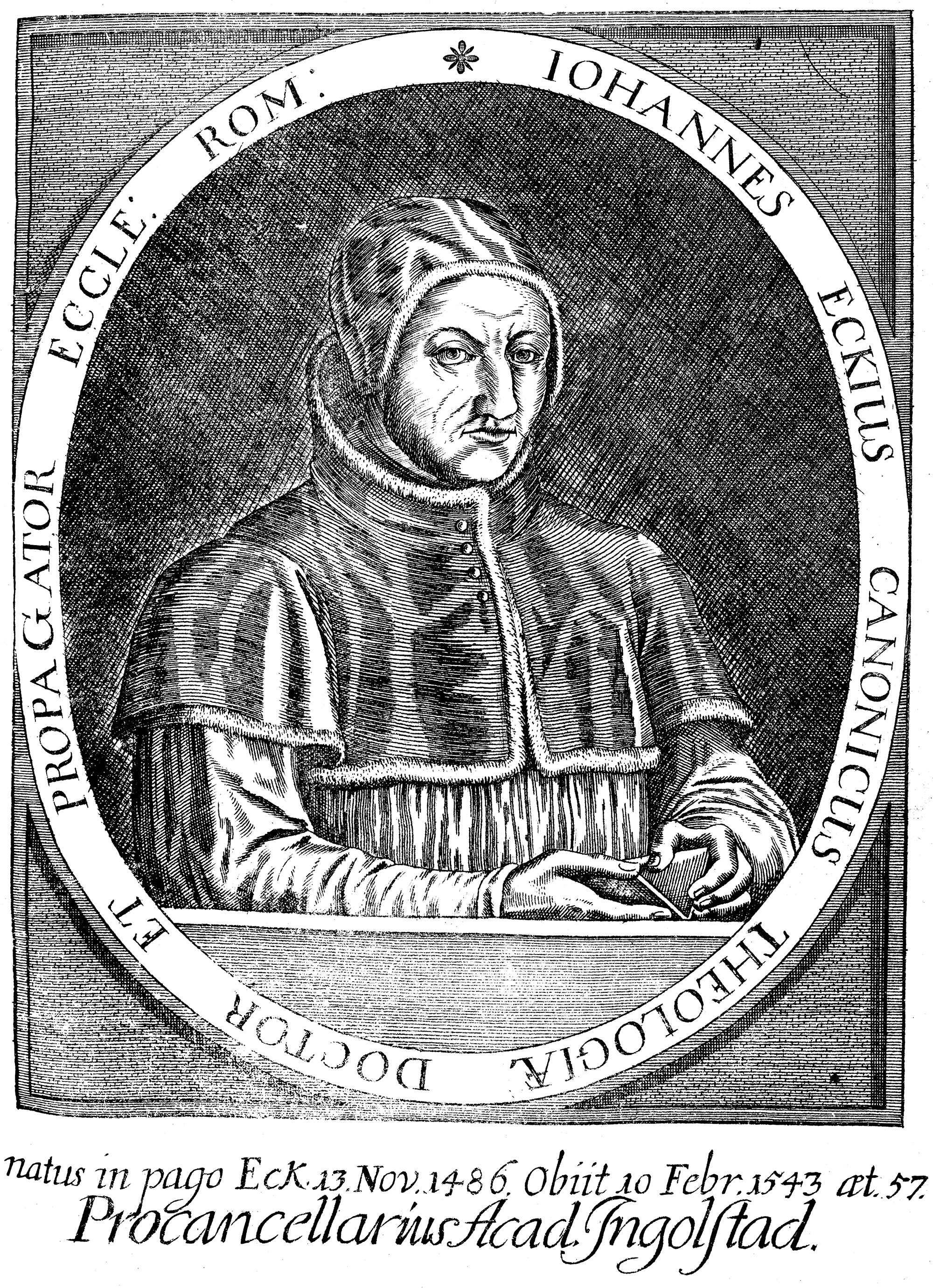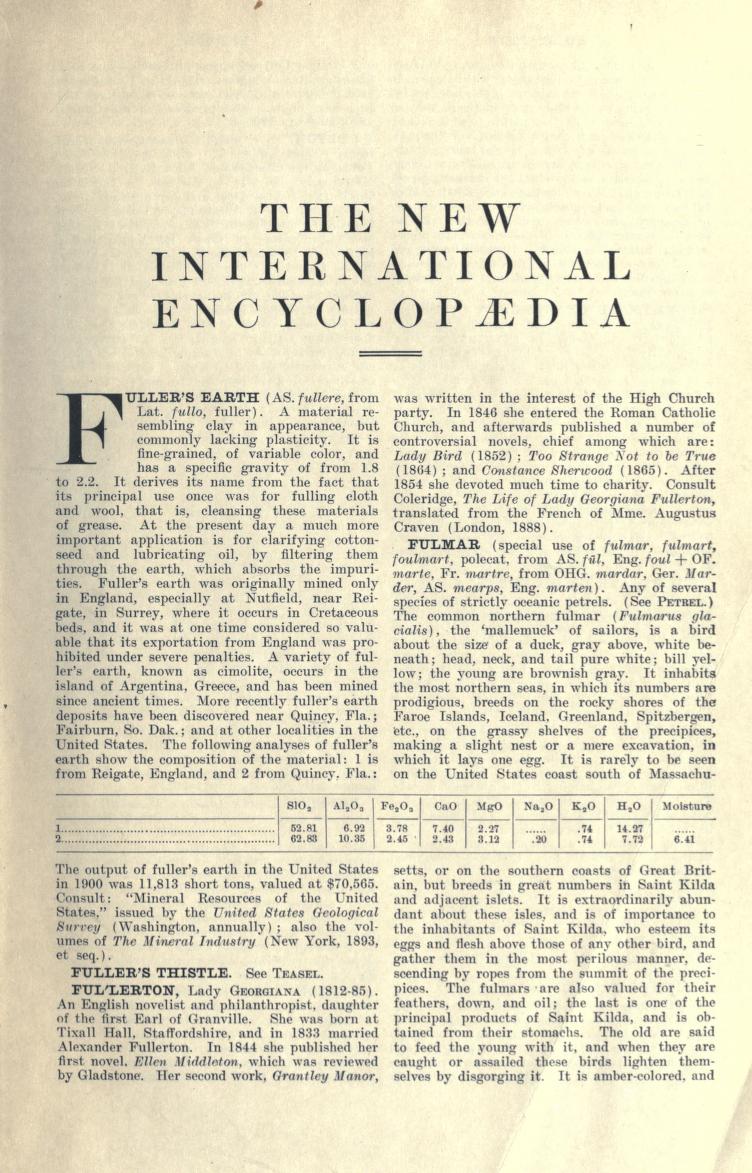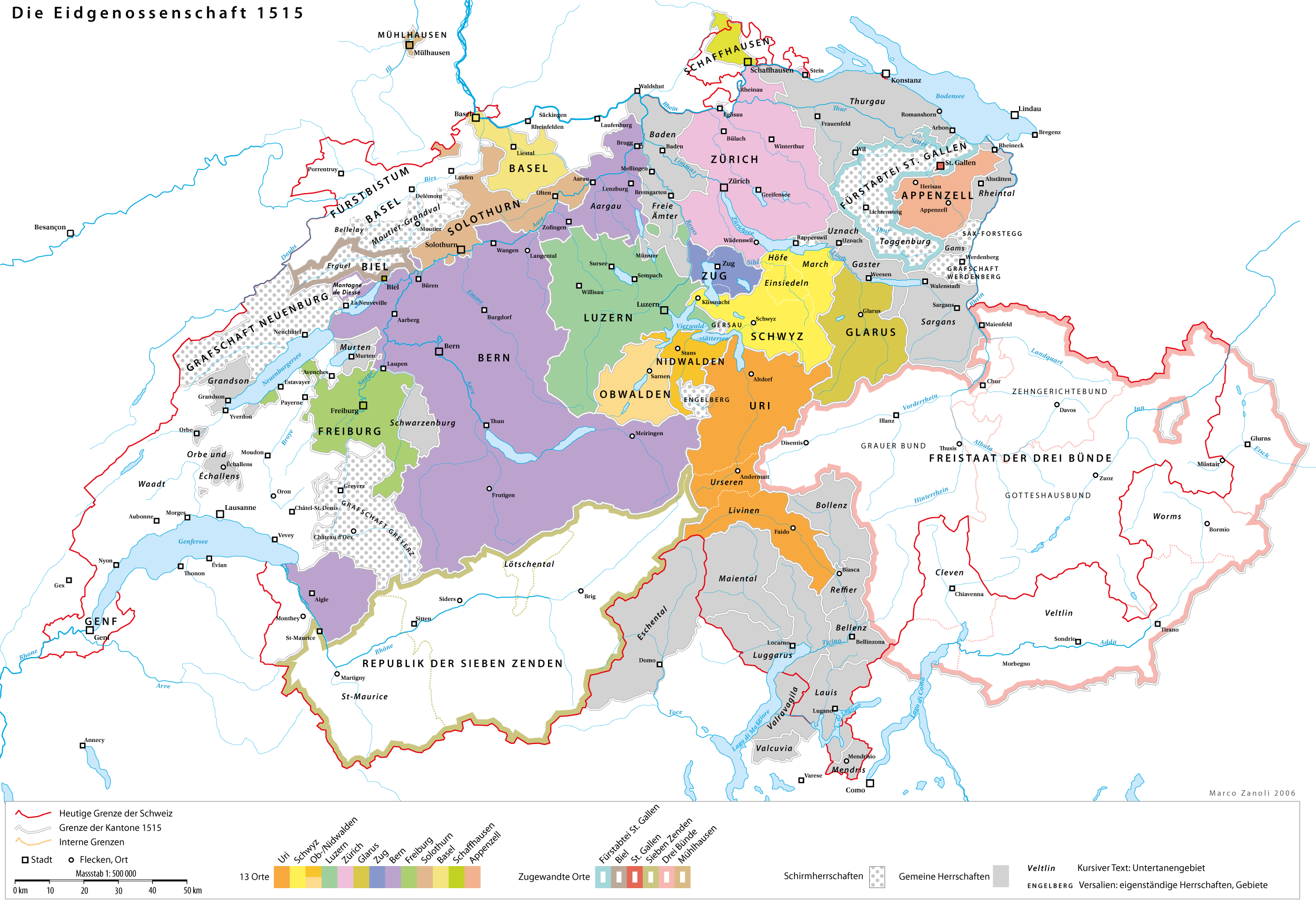|
Emser
Jerome (or Hieronymus) Emser (March 20, 1477 – November 8, 1527), German theologian and antagonist of Luther, was born of a good family at Ulm. He studied Greek at Tübingen and jurisprudence at Basel, and after acting for three years as chaplain and secretary to Raymond Peraudi, cardinal of Gurk, he began lecturing on classics in 1504 at Erfurt, where Luther may have been among his audience. In the same year he became secretary to Duke George of Albertine Saxony, who, unlike his cousin Frederick the Wise, the elector of Ernestine Saxony, remained the stanchest defender of Roman Catholicism among the princes of northern Germany. Duke George at this time was bent on securing the canonization of Bishop Benno of Meissen, and at his instance Emser travelled through Saxony and Bohemia in search of materials for a life of Benno, which he subsequently published in German and Latin. In pursuit of the same object he made an unsuccessful visit to Rome in 1510. Meanwhile, he had also ... [...More Info...] [...Related Items...] OR: [Wikipedia] [Google] [Baidu] |
Johann Maier Eck
Johann Maier von Eck (13 November 1486 – 13 February 1543), often anglicized as John Eck, was a German Catholic theologian, scholastic, prelate, and a pioneer of the counter-reformation who was among Martin Luther's most important interlocutors and theological opponents. Life Johann Eck was born Johann Maier at Eck (later Egg, near Memmingen, Swabia) and derived his additional surname from his birthplace, which he himself, after 1523, always modified into Eckius or Eccius, i.e. "of Eck". His father, Michael Maier, was a peasant and bailiff, or ''Amtmann'', of the village. The boy's education was undertaken by his uncle, Martin Maier, parish priest at Rottenburg on the river Neckar. At the age of 12 he entered the University of Heidelberg, which he left in the following year for Tübingen. After taking his master's degree in 1501, he began the study of theology under Johann Jakob Lempp, and studied the elements of Hebrew and political economy with Konrad Summenhart. ... [...More Info...] [...Related Items...] OR: [Wikipedia] [Google] [Baidu] |
Corpus Catholicorum
The ''Corpus Catholicorum'' (Corp. Cath., CCath., CC) is a collection of sixteenth-century writings by the leading proponents and defenders of the Roman Catholic Church against the teachings of the Protestant reformers. The full title of the series is: ''Corpus Catholicorum: Werke katholischer Schriftsteller im Zeitalter der Glaubensspaltung'' i.e. ''Body of Catholic ritings Works of Catholic authors in the Time of the Splitting of the Faith.'' The series, intended as a counterpart to the Corpus Reformatorum, was conceived by Professor Joseph Greving (1868–1919) of the University of Bonn in 1915, and was announced that same year in the Theologische Revue' as a "Plan für ein Corpus Catholicorum" or "Plan for a Corpus Catholicorum" *Vol. 43. Pierre Fraenkel, Münster, Aschendorff, 1992, . ** Henry VIII of England, Henry VIII. ''Assertio septem sacramentorum adversus Martinum Lutherum, Henry VIII, King of England''. *Vols. 45-48: '' Mary Ward und ihre Gründung: Die Quellent ... [...More Info...] [...Related Items...] OR: [Wikipedia] [Google] [Baidu] |
George, Duke Of Saxony
George the Bearded ( Meissen, 27 August 1471 – Dresden, 17 April 1539) was Duke of Saxony from 1500 to 1539 known for his opposition to the Reformation. While the Ernestine line embraced Lutheranism, the Albertines (headed by George) were reluctant to do so. Despite George's efforts to avoid a succession by a Lutheran upon his death in 1539, he could not prevent it from happening. Under the Act of Settlement of 1499, Lutheran Henry IV became the new duke. Upon his accession, Henry introduced Lutheranism as a state religion in the Albertine lands of Saxony. Duke George was a member of the Order of the Golden Fleece. Life His father was Albert the Brave of Saxony, founder of the Albertine line of the Wettin family, his mother was Sidonie, daughter of George Podiebrad, King of Bohemia. Elector Frederick the Wise, a member of the Ernestine branch of the same family, known for his protection of Luther, was a cousin of Duke George. George, as the eldest son, received an ... [...More Info...] [...Related Items...] OR: [Wikipedia] [Google] [Baidu] |
Benno Of Meissen
Benno ( – 16 June 1106) was named Bishop of Meissen in 1066. Venerated since the 13th century, he was canonized in 1523. Benno did much for his diocese, both by ecclesiastical reforms on thHildebrandine modeland by material developments. He was venerated in his native Saxony throughout the Late Middle Ages. Sources The first ''Vita'' was composed in 1460 by one Spedel, a Benedictine monk of St. Michael's monastery in Hildesheim. The second, by Jerome Emser, was published in 1512 as part of the efforts to have Benno canonized.Finucane, Ronald C., ''Contested Canonizations: T ... [...More Info...] [...Related Items...] OR: [Wikipedia] [Google] [Baidu] |
Dresden
Dresden (, ; Upper Saxon: ''Dräsdn''; wen, label=Upper Sorbian, Drježdźany) is the capital city of the German state of Saxony and its second most populous city, after Leipzig. It is the 12th most populous city of Germany, the fourth largest by area (after Berlin, Hamburg and Cologne), and the third most populous city in the area of former East Germany, after Berlin and Leipzig. Dresden's urban area comprises the towns of Freital, Pirna, Radebeul, Meissen, Coswig, Radeberg and Heidenau and has around 790,000 inhabitants. The Dresden metropolitan area has approximately 1.34 million inhabitants. Dresden is the second largest city on the River Elbe after Hamburg. Most of the city's population lives in the Elbe Valley, but a large, albeit very sparsely populated area of the city east of the Elbe lies in the West Lusatian Hill Country and Uplands (the westernmost part of the Sudetes) and thus in Lusatia. Many boroughs west of the Elbe lie in the foreland of the Ore Mounta ... [...More Info...] [...Related Items...] OR: [Wikipedia] [Google] [Baidu] |
New International Encyclopedia
''The New International Encyclopedia'' was an American encyclopedia first published in 1902 by Dodd, Mead and Company. It descended from the ''International Cyclopaedia'' (1884) and was updated in 1906, 1914 and 1926. History ''The New International Encyclopedia'' was the successor of the ''International Cyclopaedia'' (1884). Initially, ''The International Cyclopaedia'' was largely a reprint of Alden's ''Library of Universal Knowledge'', which was a reprint of the British ''Chambers's Encyclopaedia''. The title was changed to ''The New International Encyclopedia'' in 1902, with editors Harry Thurston Peck, Daniel Coit Gilman, and Frank Moore Colby. The encyclopedia was popular and reprints were made in 1904, 1905, 1907 (corrected and expanded to 20 volumes), 1909 and 1911. The 2nd edition appeared from 1914 to 1917 in 24 volumes. With Peck and Gilman deceased, Colby was joined by a new editor, Talcott Williams. This edition was set up from new type and thoroughly revised. It ... [...More Info...] [...Related Items...] OR: [Wikipedia] [Google] [Baidu] |
Vulgate
The Vulgate (; also called (Bible in common tongue), ) is a late-4th-century Latin translation of the Bible. The Vulgate is largely the work of Jerome who, in 382, had been commissioned by Pope Damasus I to revise the Gospels used by the Roman Church. Later, on his own initiative, Jerome extended this work of revision and translation to include most of the books of the Bible. The Vulgate became progressively adopted as the Bible text within the Western Church. Over succeeding centuries, it eventually eclipsed the . By the 13th century it had taken over from the former version the designation (the "version commonly used") or for short. The Vulgate also contains some ''Vetus Latina'' translations which Jerome did not work on. The Vulgate was to become the Catholic Church's officially promulgated Latin version of the Bible as the Sixtine Vulgate (1590), then as the Clementine Vulgate (1592), and then as the ''Nova Vulgata'' (1979). The Vulgate is still curr ... [...More Info...] [...Related Items...] OR: [Wikipedia] [Google] [Baidu] |
Huldrych Zwingli
Huldrych or Ulrich Zwingli (1 January 1484 – 11 October 1531) was a leader of the Reformation in Switzerland, born during a time of emerging Swiss patriotism and increasing criticism of the Swiss mercenary system. He attended the University of Vienna and the University of Basel, a scholarly center of Renaissance humanism. He continued his studies while he served as a pastor in Glarus and later in Einsiedeln, where he was influenced by the writings of Erasmus. In 1519, Zwingli became the Leutpriester (people's priest) of the Grossmünster in Zürich where he began to preach ideas on reform of the Catholic Church. In his first public controversy in 1522, he attacked the custom of fasting during Lent. In his publications, he noted corruption in the ecclesiastical hierarchy, promoted clerical marriage, and attacked the use of images in places of worship. Among his most notable contributions to the Reformation was his expository preaching, starting in 1519, through the Gosp ... [...More Info...] [...Related Items...] OR: [Wikipedia] [Google] [Baidu] |
New Testament
The New Testament grc, Ἡ Καινὴ Διαθήκη, transl. ; la, Novum Testamentum. (NT) is the second division of the Christian biblical canon. It discusses the teachings and person of Jesus, as well as events in first-century Christianity. The New Testament's background, the first division of the Christian Bible, is called the Old Testament, which is based primarily upon the Hebrew Bible; together they are regarded as sacred scripture by Christians. The New Testament is a collection of Christian texts originally written in the Koine Greek language, at different times by various authors. While the Old Testament canon varies somewhat between different Christian denominations, the 27-book canon of the New Testament has been almost universally recognized within Christianity since at least Late Antiquity. Thus, in almost all Christian traditions today, the New Testament consists of 27 books: * 4 canonical gospels (Matthew, Mark, Luke, and John) * The Acts of the Apostl ... [...More Info...] [...Related Items...] OR: [Wikipedia] [Google] [Baidu] |
Henry VIII Of England
Henry VIII (28 June 149128 January 1547) was King of England from 22 April 1509 until his death in 1547. Henry is best known for his six marriages, and for his efforts to have his first marriage (to Catherine of Aragon) annulled. His disagreement with Pope Clement VII about such an annulment led Henry to initiate the English Reformation, separating the Church of England from papal authority. He appointed himself Supreme Head of the Church of England and dissolved convents and monasteries, for which he was excommunicated by the pope. Henry is also known as "the father of the Royal Navy" as he invested heavily in the navy and increased its size from a few to more than 50 ships, and established the Navy Board. Domestically, Henry is known for his radical changes to the English Constitution, ushering in the theory of the divine right of kings in opposition to papal supremacy. He also greatly expanded royal power during his reign. He frequently used charges of treason and ... [...More Info...] [...Related Items...] OR: [Wikipedia] [Google] [Baidu] |
Excommunication
Excommunication is an institutional act of religious censure used to end or at least regulate the communion of a member of a congregation with other members of the religious institution who are in normal communion with each other. The purpose of the institutional act is to deprive, suspend, or limit membership in a religious community or to restrict certain rights within it, in particular, those of being in communion with other members of the congregation, and of receiving the sacraments. It is practiced by all of the ancient churches (such as the Catholic Church, Oriental Orthodox churches and the Eastern Orthodox churches) as well as by other Christian denominations, but it is also used more generally to refer to similar types of institutional religious exclusionary practices and shunning among other religious groups. The Amish have also been known to excommunicate members that were either seen or known for breaking rules, or questioning the church, a practice known as shun ... [...More Info...] [...Related Items...] OR: [Wikipedia] [Google] [Baidu] |
.jpg)






.jpg)



